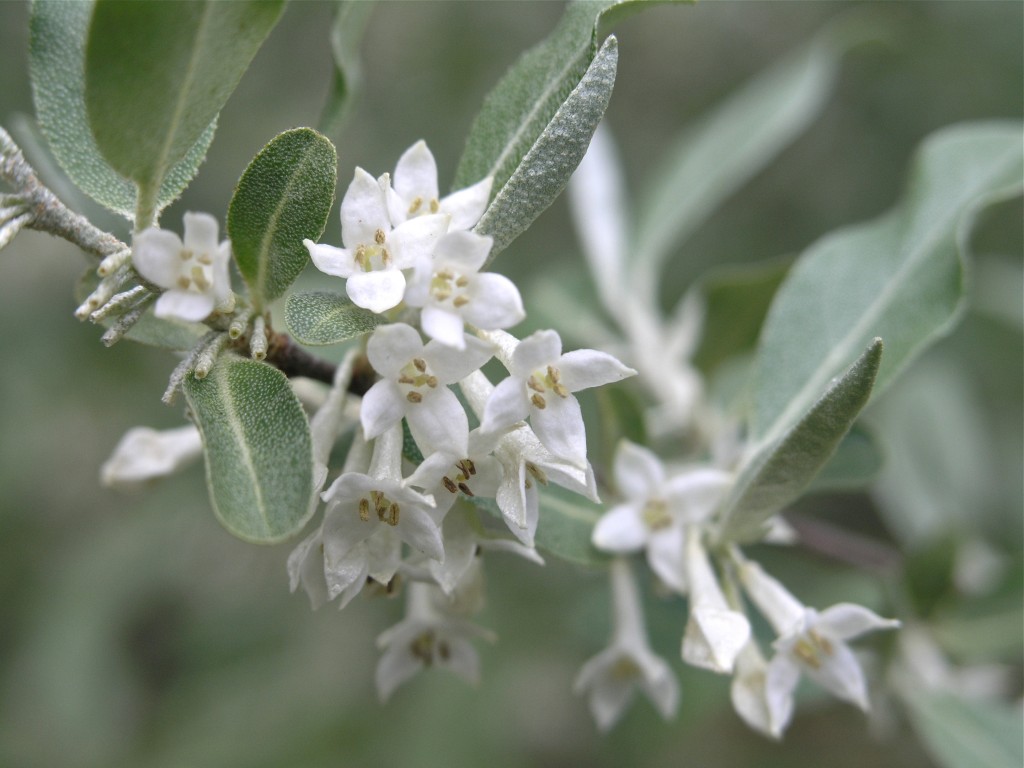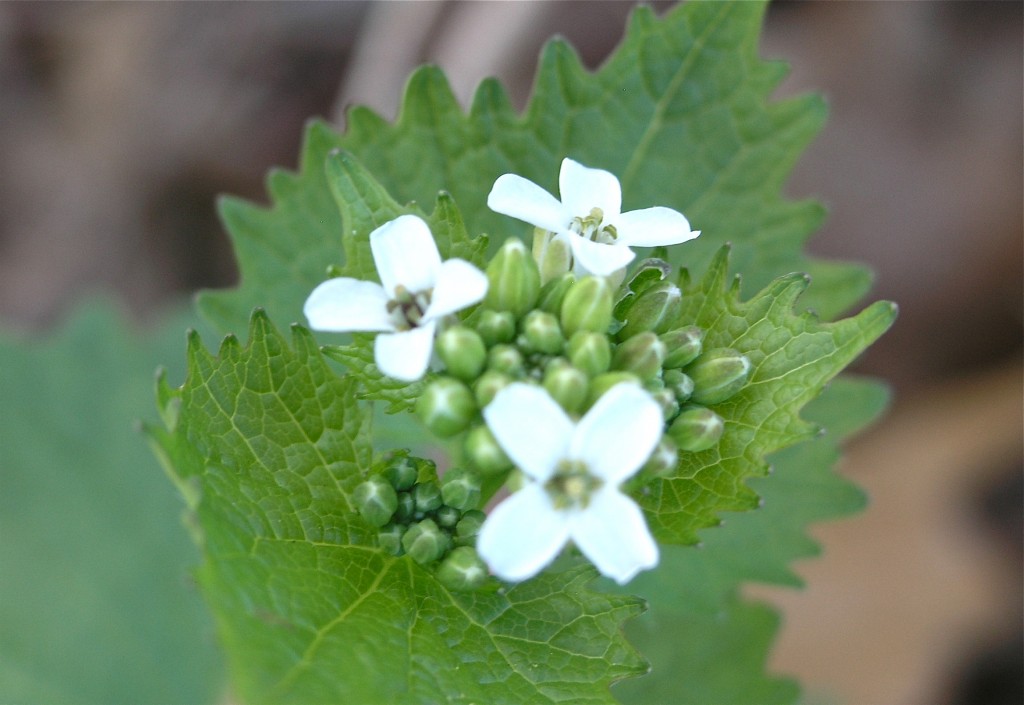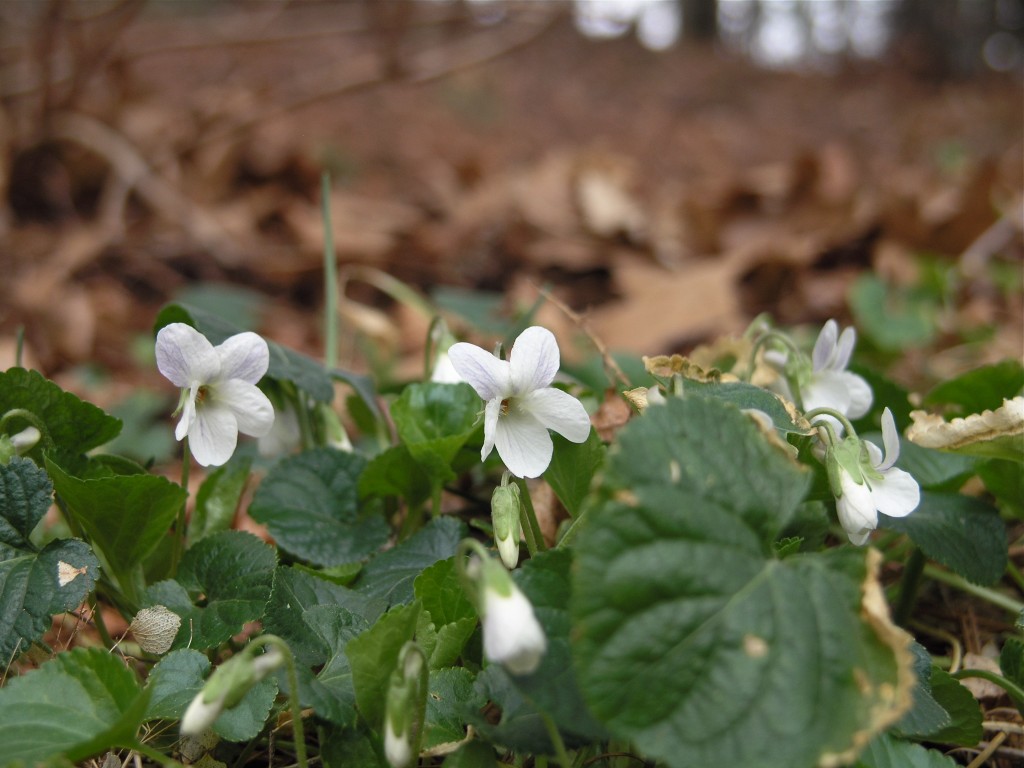 Saw a drift of these at Elm Bank. Lovely. Wood anemone have four to nine sepals. These have five. Native. Buttercup family.
Saw a drift of these at Elm Bank. Lovely. Wood anemone have four to nine sepals. These have five. Native. Buttercup family.
Wood Anemone, Nightcaps (Anemone quinquefolia)

 This is a large shrub native to eastern Asia, considered an invasive species here. The leaves are silvery in spring, but turn greener throughout the summer. The flowers are lightly fragrant. They’ll have red fruit that is edible (works well as a dried fruit) and has loads more antioxidant lycopene than tomatoes!
This is a large shrub native to eastern Asia, considered an invasive species here. The leaves are silvery in spring, but turn greener throughout the summer. The flowers are lightly fragrant. They’ll have red fruit that is edible (works well as a dried fruit) and has loads more antioxidant lycopene than tomatoes!
Japanese silverberry, Autumn-olive, Spreading oleaster (Elaeagnus umbellata)
 Alert Flowerophile Donna is really on the ball here, spotting a bunch of these little trees at Centennial. They are full of these big white blossoms and I can’t believe I never noticed them in previous years. These are native to the U.S., but primarily occur in more southern regions (like South Carolina to Texas), so I don’t know if these might have wandered out from someone’s yard? They’re very striking.
Alert Flowerophile Donna is really on the ball here, spotting a bunch of these little trees at Centennial. They are full of these big white blossoms and I can’t believe I never noticed them in previous years. These are native to the U.S., but primarily occur in more southern regions (like South Carolina to Texas), so I don’t know if these might have wandered out from someone’s yard? They’re very striking.
Silver bell, Snowdrop tree (Halesia diptera)
Thanks to Alert Flowerophile Donna for noticing a flock of these little lilies at Wilson Mountain. Sessile means sitting or resting on the surface — these have sessile leaves, which means the leaf comes directly out of the main stem, but the leaf itself has no stem of its own. From the Lily family. Native to this region.
Sessile Bellwort, Wild Oats (Uvularia sessilifolia)
 Newly blossoming at Centennial this week. As far as I can tell, this is Garlic Mustard, which sounds good, but evidently it’s a terrible weed that crowds out native plants. (Introduced from Europe.)
Newly blossoming at Centennial this week. As far as I can tell, this is Garlic Mustard, which sounds good, but evidently it’s a terrible weed that crowds out native plants. (Introduced from Europe.)
“Garlic mustard poses a severe threat to native plants and animals in forest communities in much of the eastern and midwestern U.S. Many native wildlflowers that complete their life cycles in the springtime (e.g., spring beauty, wild ginger, bloodroot, Dutchman’s breeches, hepatica, toothworts, and trilliums) occur in the same habitat as garlic mustard. Once introduced to an area, garlic mustard outcompetes native plants by aggressively monopolizing light, moisture, nutrients, soil and space. Wildlife species that depend on these early plants for their foliage, pollen, nectar, fruits, seeds and roots, are deprived of these essential food sources when garlic mustard replaces them. ” -Plant Conservation Alliance
Garlic Mustard (Alliaria petiolata)
 Today’s find was right outside the back door—a drift of white violets have bloomed on the edge of the woods. There are a lot of violet varieties … it appears that this is Common Blue Violet which is a variable species that can occur as white or partly white. They are native.
Today’s find was right outside the back door—a drift of white violets have bloomed on the edge of the woods. There are a lot of violet varieties … it appears that this is Common Blue Violet which is a variable species that can occur as white or partly white. They are native.
Common Blue Violet (Viola sororia)